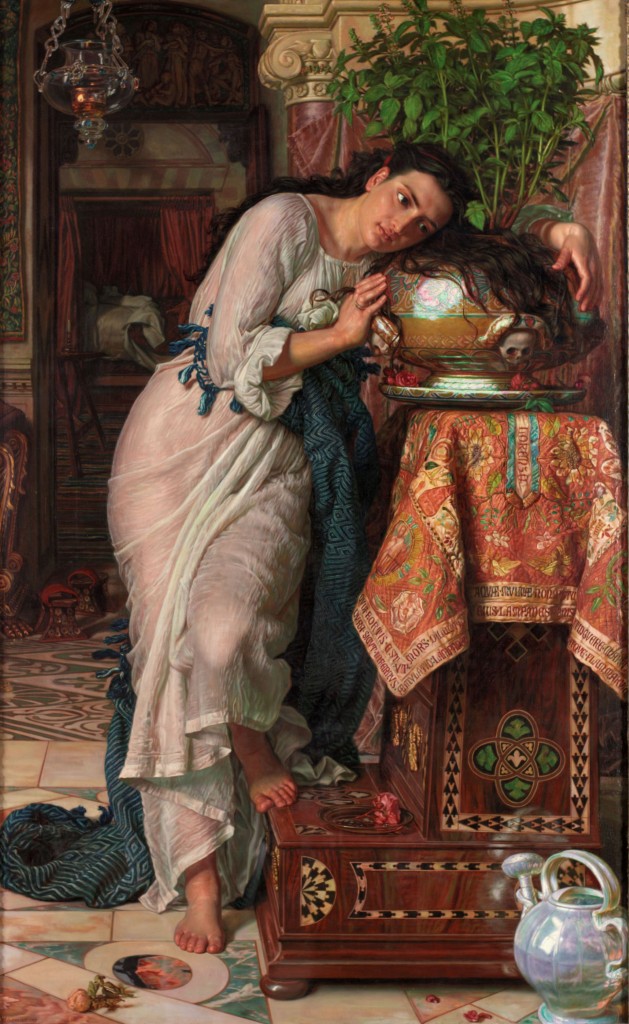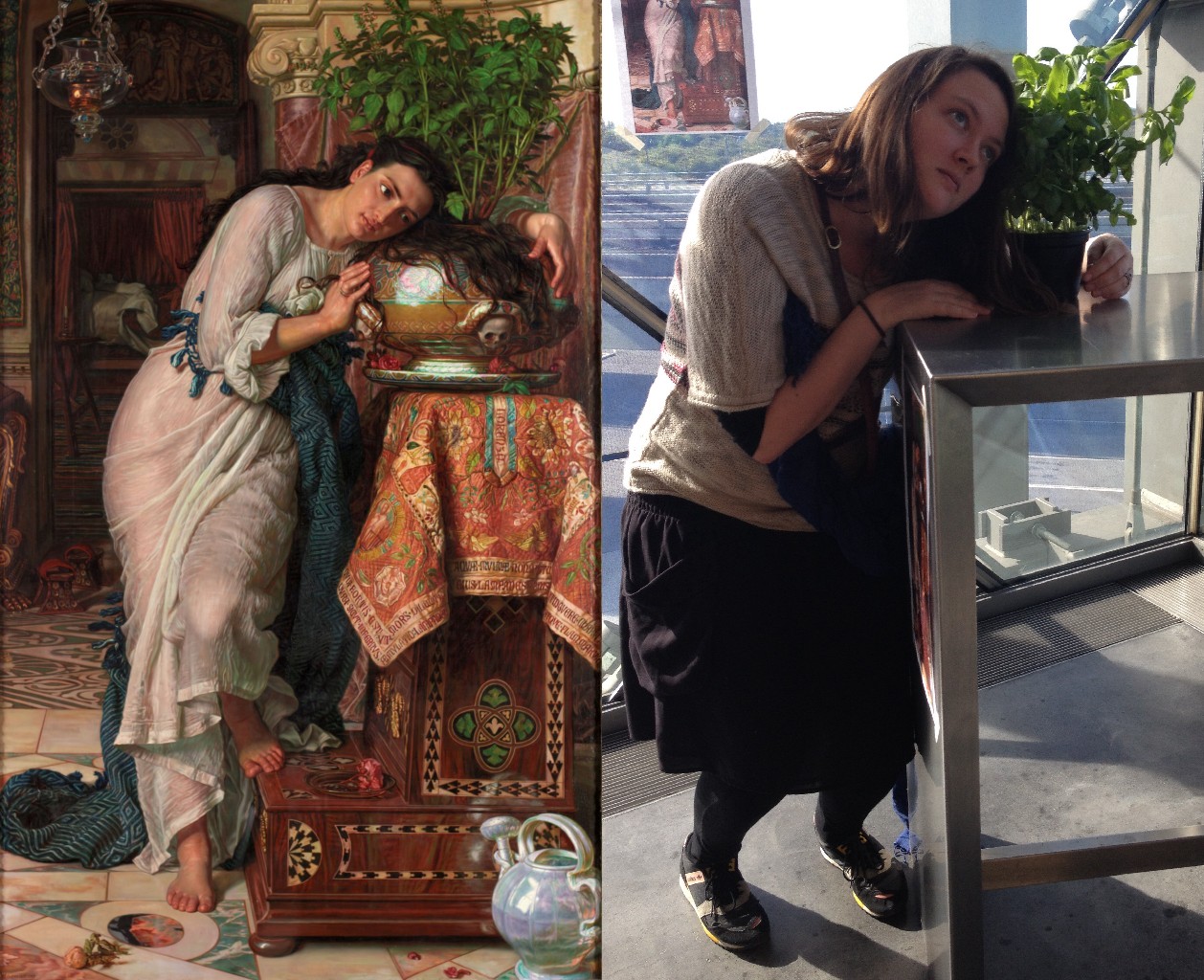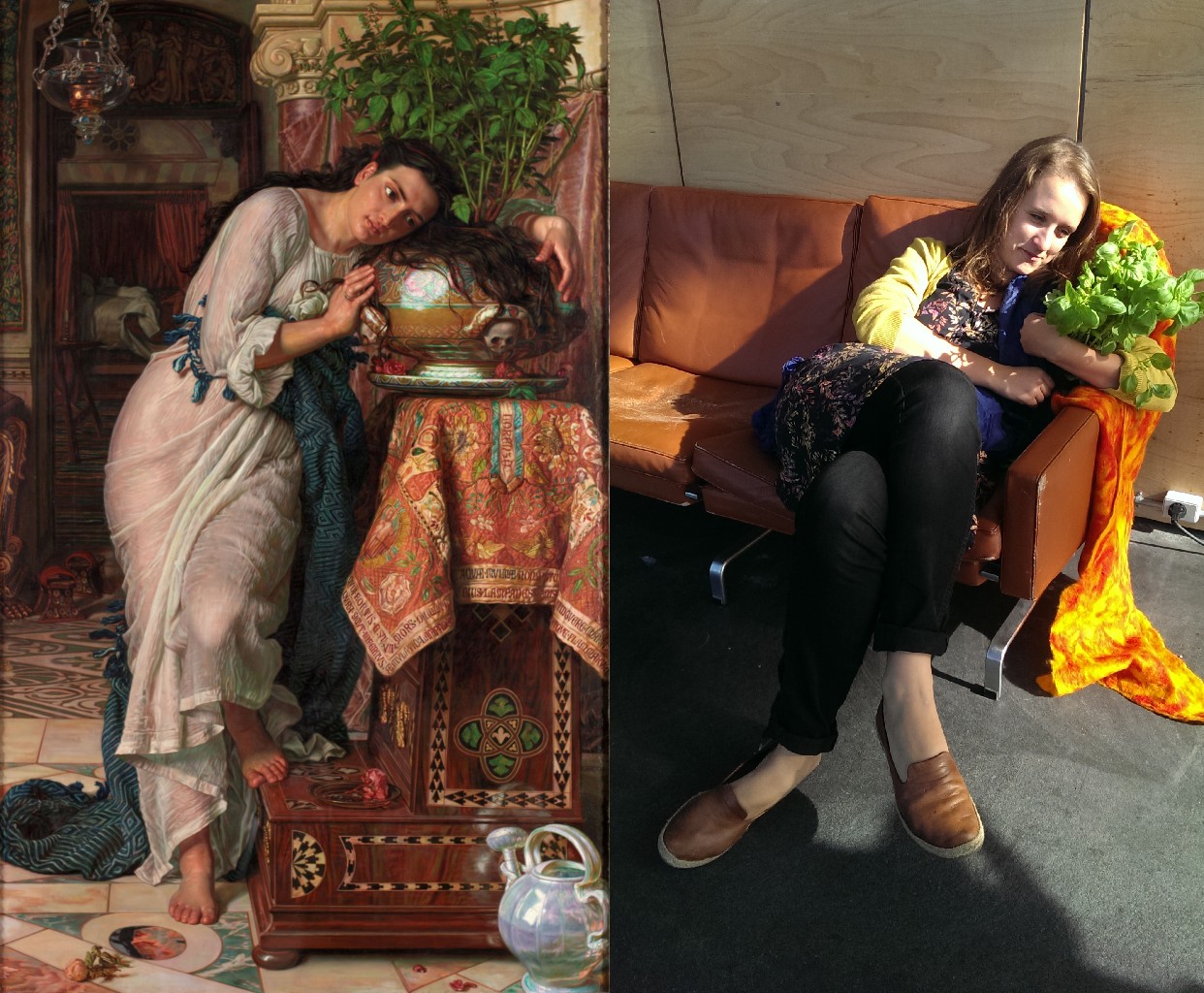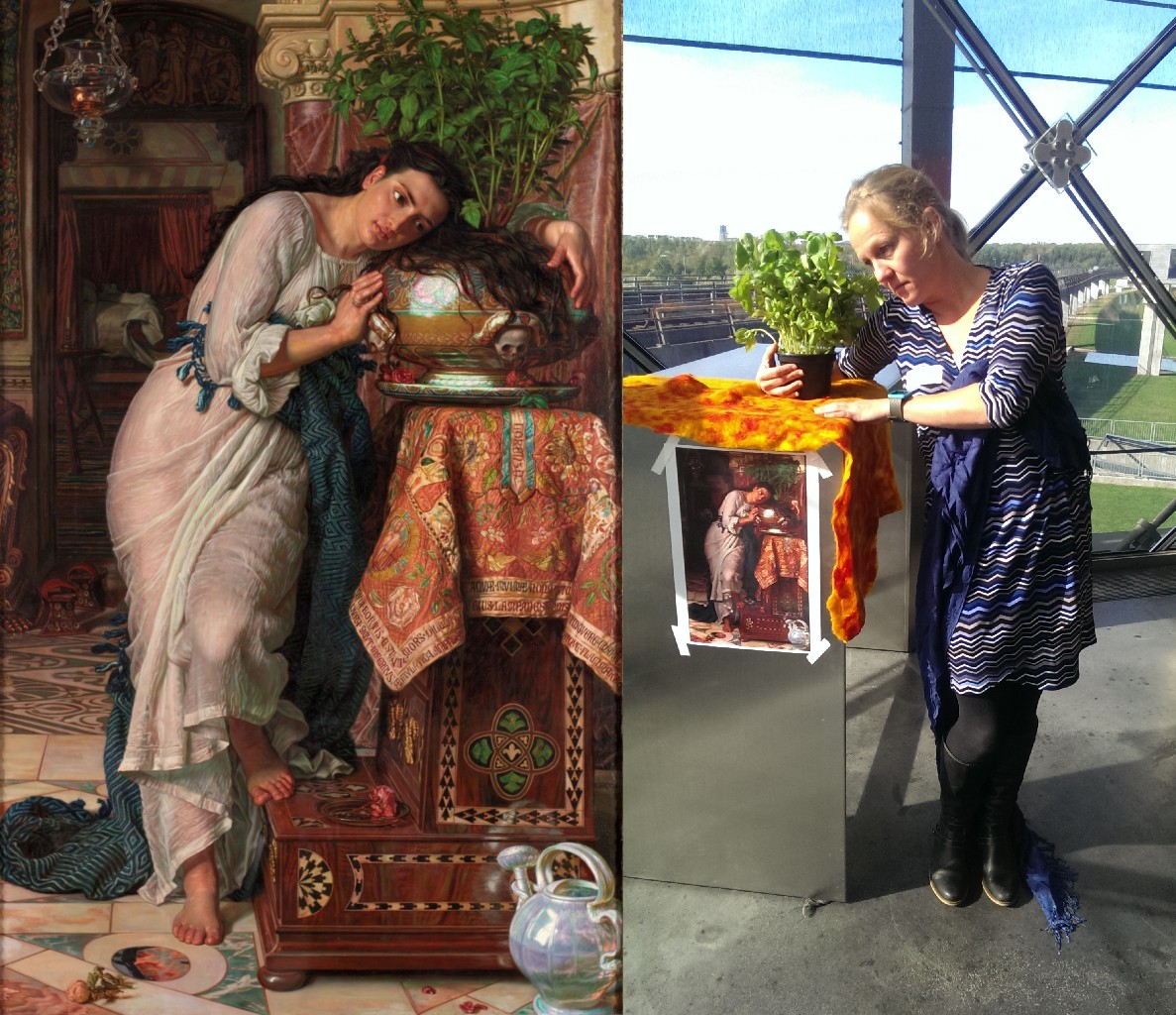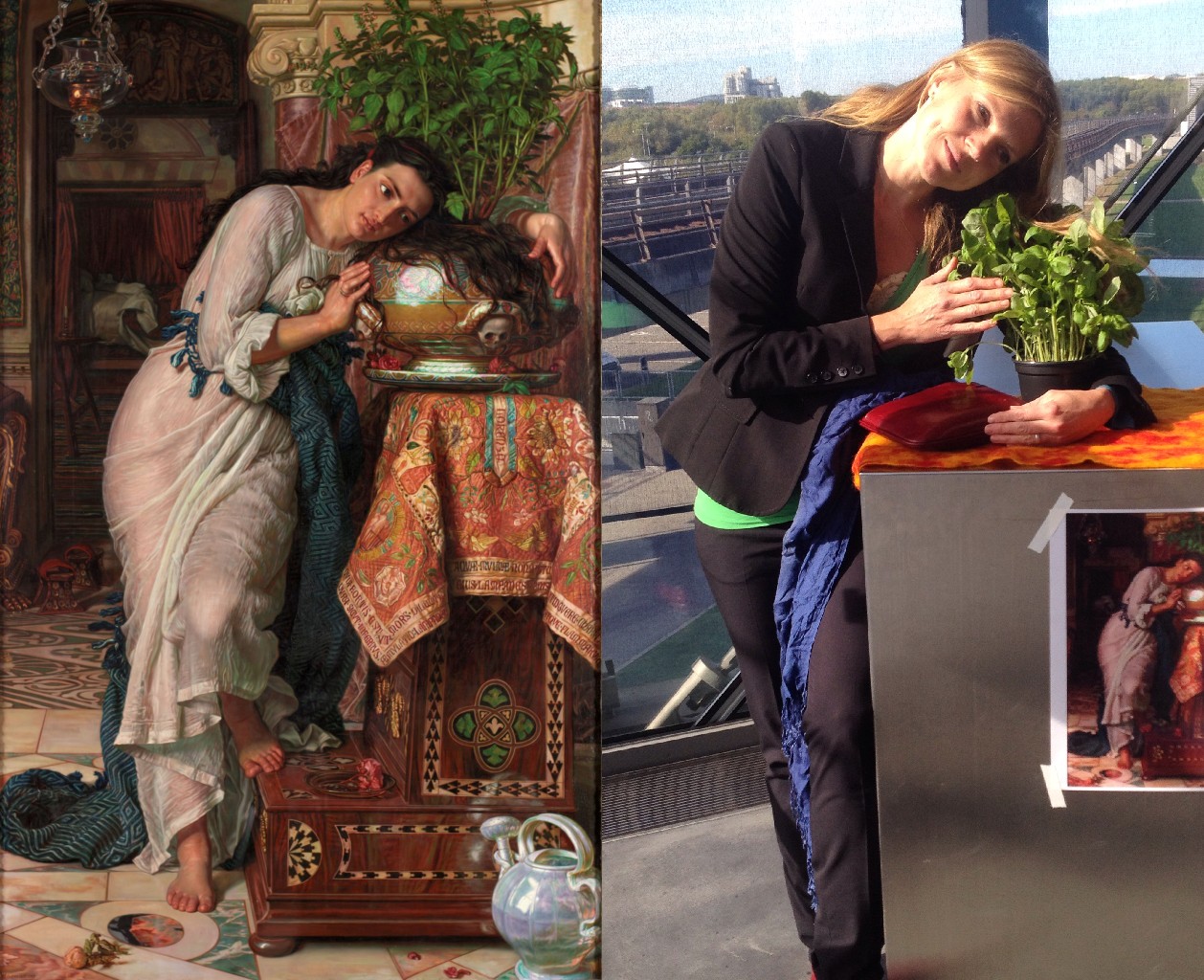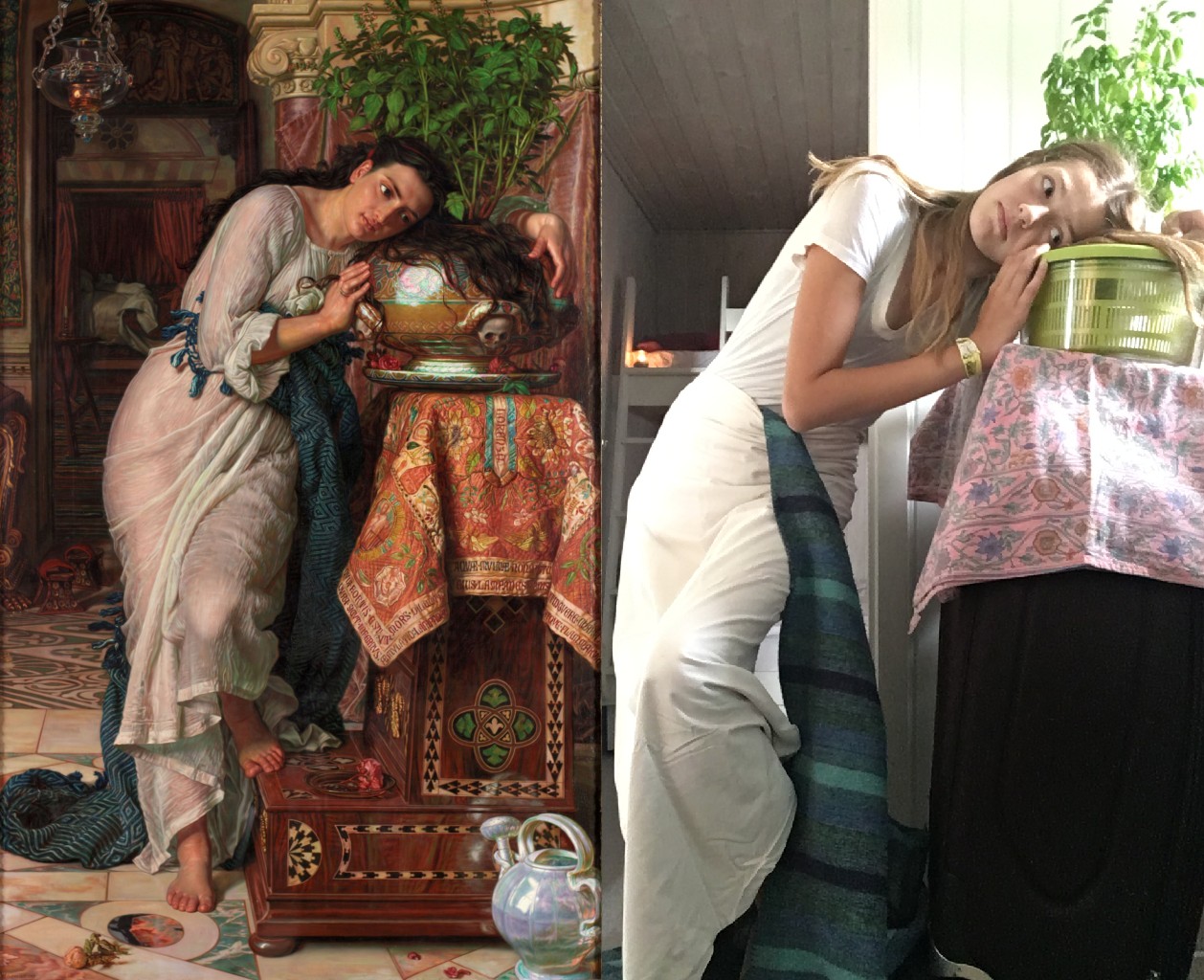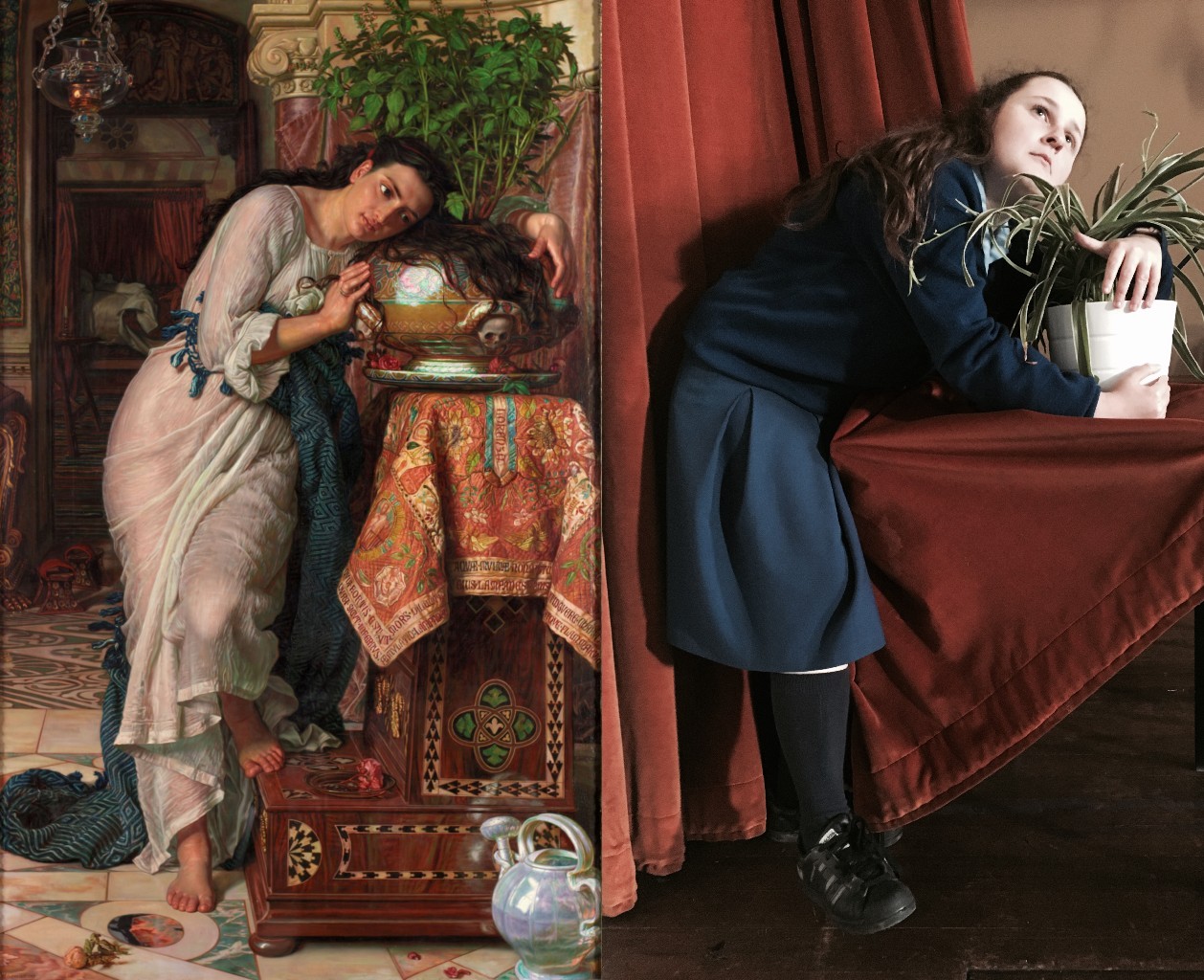By: William Holman Hunt (1827 – 1910)
Created: 1868, Collection: The Laing Gallery, Tyne & Wear Archives and Museums , Newcastle upon Tyne, The United Kingdom Rights: Public Domain
Attention to detail, earthy colours and luxurious fabrics will capture the essence of this masterpiece. Skulls on the pot refer to Lorenzo's death, and dying roses on the ground symbolise the end of love.
William Holman Hunt was one of the founding members of the Pre-Raphaelite Brotherhood of artists. This painting is typical of his work and is based on verses from John Keats’s 19th century poem, Isabella, a re-interpretation of a medieval story.The story goes that Isabella fell in love with Lorenzo, one of her brothers’ employees. When her brothers found out, they murdered Lorenzo and buried his body. His ghost informs Isabella in a dream. She exhumes his body and buries the head in a pot of basil which she tends obsessively, while pining away.
This painting is especially poignant as it was modeled on the artist’s wife, Fanny Waugh, who died before the picture was completed. He continued working on the painting as a labour of love and a memorial to her.
Hunt was always keen to maximise the popular appeal and public visibility of his works. The attention to detail, vivid colour and elaborate symbolism were influenced by the writings of John Ruskin and Thomas Carlyle, according to whom the world itself should be read as a system of visual signs.
The picture was owned by the Tynemouth collector James Hall, who was a partner in the Newcastle shipping business of Palmer, Hall & Co.
